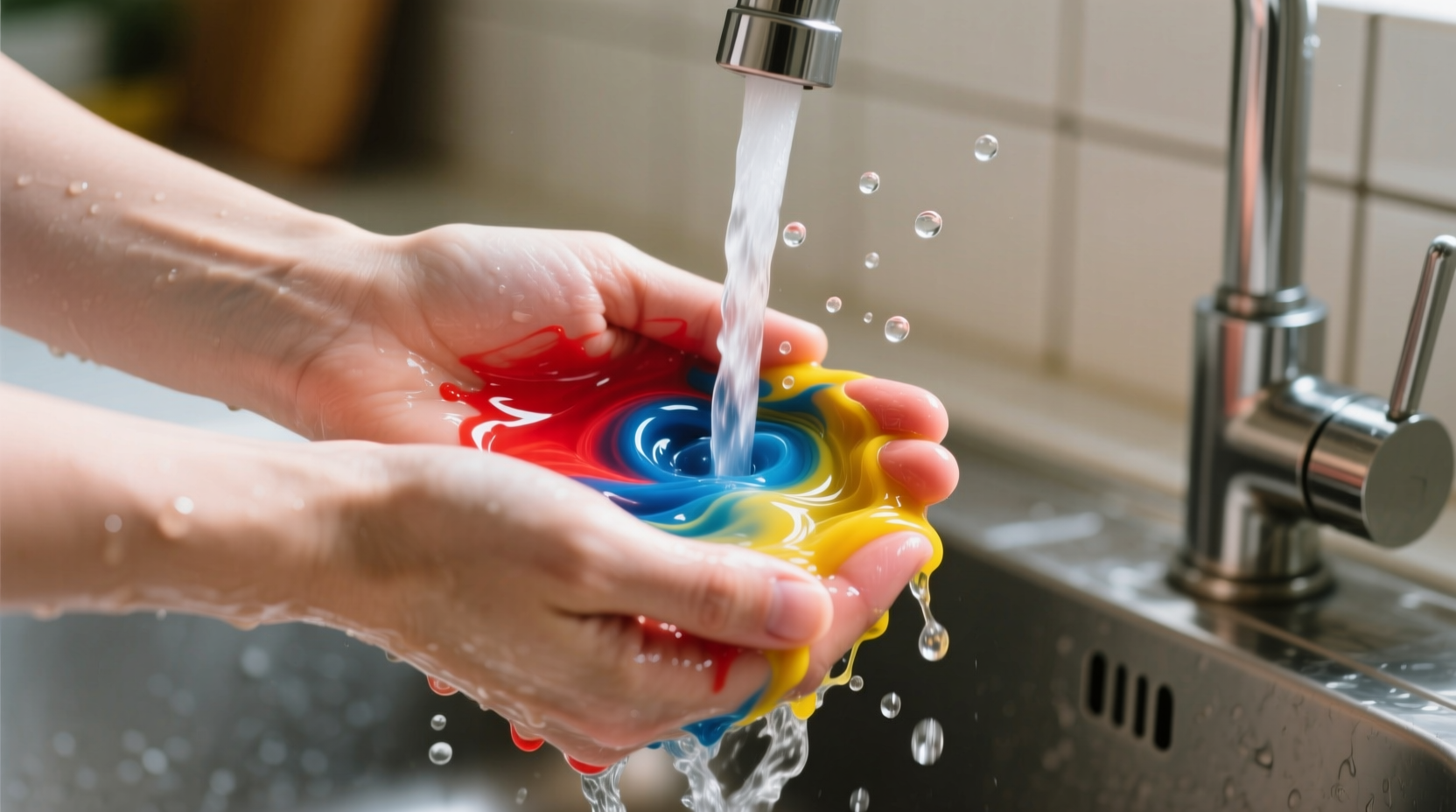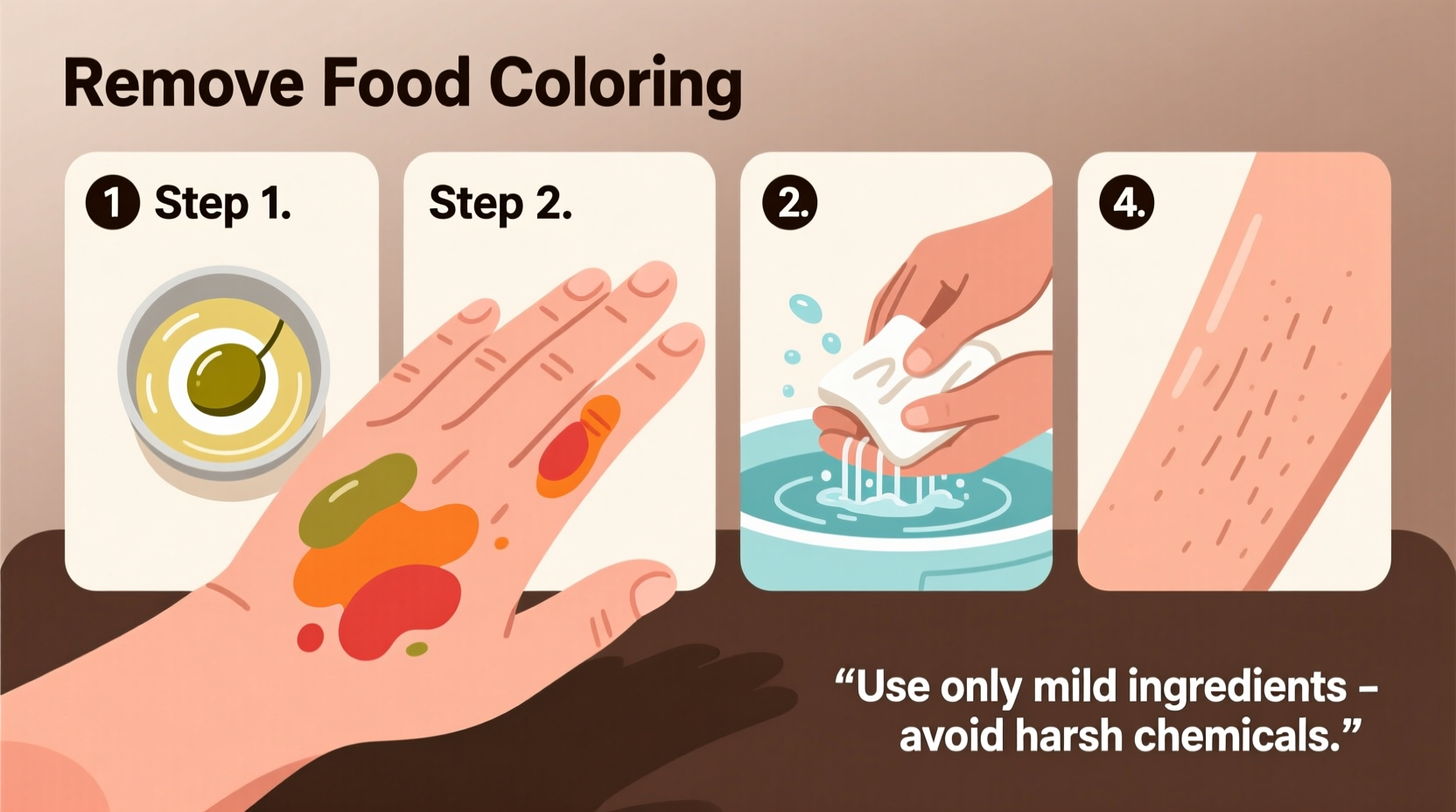Got vibrant food coloring smeared on your hands after baking or decorating? You're not alone. Whether you're a parent helping kids with crafts, a baker creating festive treats, or a chef preparing colorful dishes, accidental skin stains happen. The good news: most food coloring washes off with simple, safe techniques you can do right now with household items. This guide reveals exactly how to remove those stubborn rainbow stains without damaging your skin—plus prevention tips for next time.
Why Food Coloring Sticks to Skin (And How to Beat It)
Food dyes contain small pigment molecules that temporarily bind to the outer layer of your skin (the stratum corneum). Unlike permanent tattoos, these stains only affect dead skin cells, which naturally shed within days. But when you need clean hands now, understanding this process helps you choose the right removal method.
| Removal Method | Effectiveness | Best For | Safety Notes |
|---|---|---|---|
| Soap + Warm Water | ★★☆☆☆ | Fresh stains | Safest for children's skin |
| Oil-Based Cleanser | ★★★★☆ | Dried stains | Use food-grade oils only |
| Baking Soda Paste | ★★★☆☆ | Stubborn stains | Avoid on broken skin |
| Lemon Juice | ★★★☆☆ | Color fading | Rinse immediately after use |
Immediate Removal Techniques (Under 5 Minutes)
When you spot a fresh stain, act within the first 30 minutes for easiest removal. Here's what to do:
- Soap and Water Method: Use warm (not hot) water with dish soap containing degreasers. Lather for 30 seconds, focusing on stained areas. Rinse and repeat if needed. Works for 80% of fresh stains according to American Academy of Dermatology guidelines.
- Oil Cleansing Technique: Apply olive oil, coconut oil, or baby oil to stained areas. Massage gently for 1 minute—the oil breaks down dye molecules. Wipe with a cloth, then wash with soap. Why it works: Food dyes are water-soluble but bind to skin oils; adding more oil dissolves the pigment.

Deep Cleaning for Stubborn Stains
For dried-on stains that survived initial washing:
- Baking Soda Exfoliation: Mix 1 tablespoon baking soda with 1 teaspoon water to form a paste. Gently rub on stained skin for 20 seconds (don't scrub hard). Rinse thoroughly. The mild abrasiveness lifts pigment without damaging skin.
- Lemon Juice Fade: Dab fresh lemon juice on stains using a cotton ball. Wait 2 minutes, then rinse. The citric acid helps break down dye molecules. Important: Never use before sun exposure as it increases photosensitivity.
Skin-Sensitive Solutions
For children or sensitive skin types, avoid harsh methods. The CDC recommends these gentler alternatives:
- Mix equal parts milk and dish soap—milk proteins bind to dye molecules
- Use unscented baby wipes with oil-based formulas
- Try micellar water (designed for delicate eye makeup removal)
Never use acetone, bleach, or industrial cleaners—these can cause chemical burns. Food coloring stains always fade naturally within 72 hours as your skin renews itself.
Prevention Tips for Next Time
Save yourself future cleanup with these professional techniques:
- Apply a thin layer of petroleum jelly to hands before working with dyes
- Wear nitrile gloves (latex allows dye penetration)
- Mix food coloring with a drop of oil—it binds to food better and reduces skin transfer
- Use gel-based dyes instead of liquid—they're less likely to stain skin
When to Seek Medical Help
While rare, consult a doctor if:
- Stains persist beyond 5 days with proper cleaning
- You develop redness, itching, or swelling
- Using red dyes (which sometimes contain carmine from insects) causes reaction
Most reactions are mild and resolve with basic first aid. The FDA confirms certified food colors are safe for consumption and incidental skin contact.











 浙公网安备
33010002000092号
浙公网安备
33010002000092号 浙B2-20120091-4
浙B2-20120091-4